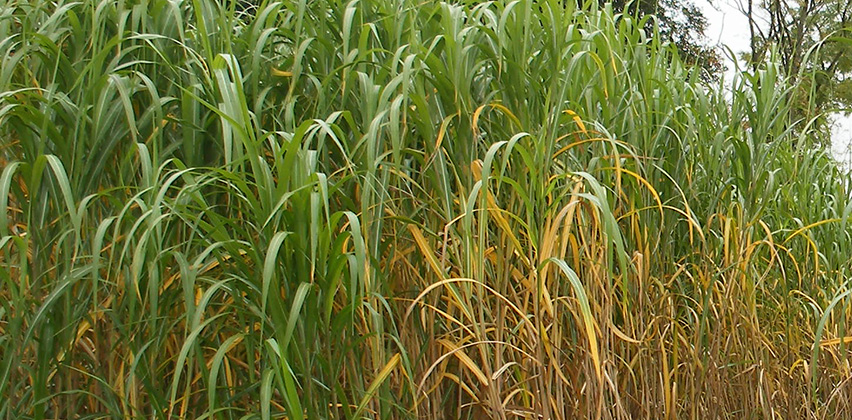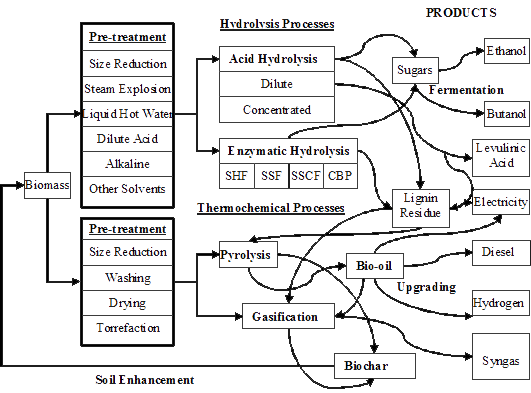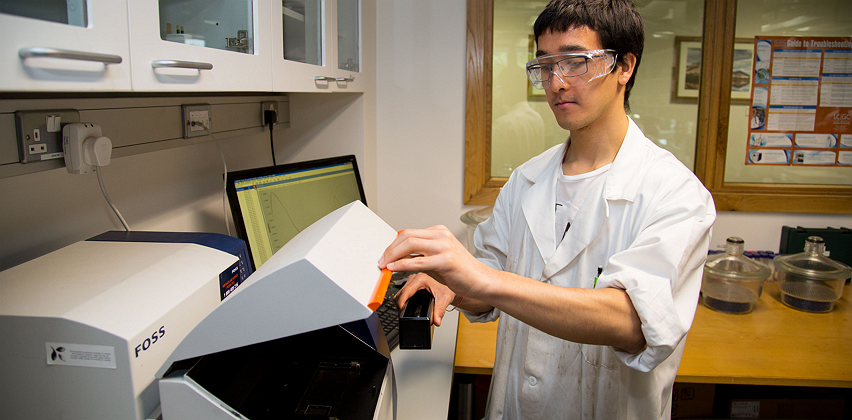Second Generation Biofuels

There are two major pathways by which second generation biofuels biorefineries operate: through hydrolysis processes that aim to liberate sugars from the lignocellulosic polysaccharides (i.e. cellulose and hemicellulose), and through thermochemical processes that degrade more extensively the components of both polysaccharides and lignin. The various technologies available for the hydrolytic or thermochemical processing of biomass, along with their products and possible pre-treatment steps, are illustrated below:

1. Hydrolysis Processes
In the hydrolysis process cellulose and hemicellulose are hydrolysed (broken apart) in pure water through attack by the hydrogen atoms of the water molecule on these polysaccharides. This is a very slow reaction, particularly for cellulose due to its recalcitrance to hydrolysis, but it can be sped up using elevated temperatures and pressures, and catalysed by acids (concentrated or dilute) and highly selective enzymes such as cellulases. Most hydrolysis technologies also involve a pre-treatment step prior to the hydrolysis of the cellulose. There are a number of options for utilising the sugars liberated in hydrolysis, however most current activity is on the fermentation of these to products such as ethanol.
Acid Hydrolysis
The acid hydrolysis of lignocellulosic materials can take place using either concentrated or dilute acids. It was commercialised in the late 19th century and several dilute-acid facilities existed in the USA, Germany, Japan, and Russia by World War 1 while concentrated acid hydrolysis facilities were being built between 1937 and the late 1960's. However, these became uneconomic where fossil fuels were available. It is hoped that modern technologies will reinvigorate the industry.
Enzymatic Hydrolysis
Many current enzymatic hydrolysis technologies first employ a pre-treatment method for the hydrolysis of hemicellulose and to make a more digestible cellulose. Cellulase enzymes are then used to selectively hydrolyse the cellulose to glucose. This occurs under much milder process conditions than with dilute acid hydrolysis; hence the potential for sugar degradation is significantly decreased.
A cellulase is actually a mixture of many different enzymes each of which has a specific role in the hydrolysis of cellulose. For instance, endo-1,4-b-D-glucanases act internally within a cellulose chain at amorphous cellulose regions to cleave glyocisidc bonds, reducing the degree of polymerisation, while cellobiohydrolases degrade the cellulose chain from either the reducing or non-reducing ends and can cleave glycosidic bonds within crystalline cellulose regions, releasing cellobiose. Cellulases can be obtained from a variety of micro-organisms, including bacteria and fungi. However, aerobic fungi typically give higher growth rates and are the focus of most research.
Most current technologies produce enzymes in a separate tank to that for hydrolysis. Glucose is a poor carbon source for enzyme productivity since it favours the production of cellular mass. Inducers of cellulase include cellobiose, lactose, and sophorose. A cellulase production run lasts approximately one week after which the spent cell mass is disposed of.
There are numerous technologies proposed for the enzymatic hydrolysis of biomass. The most basic of these, Separate Hydrolysis and Fermentation (SHF), involves the enzymatic hydrolysis of cellulose followed by fermentation of the liberated hexoses. Pentose fermentation can occur after the distillation of the resulting beer, or with a separate stream taken from the hydrolysate of the pre-treatment process.
The more advanced enzymatic hydrolysis technologies combine the processes of hydrolysis and fermentation. For example, Simultaneous Saccharification and Fermentation (SSF) sees the hydrolysis of cellulose and the fermentation of the liberated sugars occur in the same reactor. A variant on SSF is Simulatneous Saccharification and Co-Fermentation (SSCF), where the glucose from cellulose and the pentoses from hemicellulose are fermented together (in the same reactor that is used for cellulose hydrolysis).
SSF and SSCF still require the yeast to be produced in a separate reactor, however Consolidated BioProcessing (CBP) involves all activities taking place in the same reactor, ideally with one micro-organism. CBP is considered to have the potential to offer the lowest costs for biofuels and chemicals via the enzymatic pathway.
Appropriate Celignis Analysis Packages
For customers that are interested in evaluating samples for use in hydrolysis biorefining technologies it is recommended that they choose Celignis Analysis Packages related to the lignocellulosic composition of the material. A determination of the ash content may also be useful as ash can interfere with some hydrolysis mechanisms. Click here for more information on the most relevant Analysis Packages.
2. Thermochemical Processes
Historically, the main means of gaining value from low value lignocellulosic materials has been to combust these for heat and/or electricity generation. This process typically operates at low efficiencies with biomass feedstocks and cannot compete economically with power production from fossil fuels or efficient renewables such as wind. Modern technologies, however, exist to produce more valuable gas, liquid and solid products from the thermal treatment of biomass. Two of the main technologies for this, pyrolysis and gasification, will be discussed below.
Pyrolysis of Biomass
Pyrolysis can be considered to be the thermal treatment of a material in the absence of oxygen that can also result in the production of three main products: (1) a bio-oil that is produced from the condensable volatile components; (2) non-condensable gases and; (3) biochar, a residual solid component that does not decompose under the conditions employed. Over time, refinements have allowed process conditions and the feedstock to be manipulated in order to achieve high yields of bio-oil, gases, or biochar, depending on the particular end product desired.
Bio-oil is a complex mixture of water, carboxylic acids and lignin- and carbohydrate-derived products that can deteriorate rapidly over time, with polymerisation reactions forming additional water and causing phase separations.
Due to the presence of water and abundance of oxygen, the heating value of the bio-oil is low compared to fossil oils and is only suitable as a heating fuel. It can, however, be used as a starting point towards a transport fuel if catalytic upgrading mechanisms are employed. Alternatively, there may be valuable chemicals that can be extracted from the bio-oil.
Biochar has been used as a plant-growth promoter due to the porosity properties conferred by particular pore-sizes, and the ultrastructure that result from the pyrolysis process. Biochar also has use as a carbon sequestration tool since much of the char is recalcitrant to decomposition, hence a significant amount of the carbon added to soil is effectively locked away.
Gasification of Biomass
Biomass gasification differs from pyrolysis in that a limited amount of oxygen is allowed, either via the addition of air, oxygen, or steam. Gasification processes tend to provide a smaller range of products than pyrolysis processes and are geared more towards the production of combustible (e.g. hydrogen, carbon monoxide, methane, ethylene, etc) or reformable gases. Temperature, and the particular architecture of the gasifer employed, affect the distribution of these products. These gases can be used directly for energy or catalytically reformed into valuable chemicals for industry or transport.
Many potential products (such as Fischer-Tropsch diesels, alcohols, olefins, acetic acid etc.) can be synthesized from these gases with the synthesis depending on the ratio of carbon monoxide to hydrogen in the syngas. The amount of hydrogen (and hence carbon dioxide) produced can be increased via the water gas shift reaction which involves mixing steam with the syngas, since insufficient water vapour is usually released from the biomass.
Biocatalysis can also be used for the synthesis of chemicals, including ethanol, from syngas. Autotrophs use C1 compounds, such as CO, CO2 and methanol, for their carbon source and hydrogen as their energy source while unicarbonotrophs use C1 compounds alone for both these purposes. These microorganisms also utilise metals such as cobalt and nickel (which are contained in their enzymes) for the conversion of C1 compounds into value added products but they are less sensitive to many of the gas contaminants, such a sulphur, that poison metal-based catalysts. Also, the adjustment of the H2:CO ratio via the water gas shift reaction is not necessary where biological catalysts are employed and synthesis conditions can be much milder.
Appropriate Celignis Analysis Packages
For customers that are interested in evaluating samples for use in thermochemical technologies it is recommended that they choose Celignis Analysis Package P40. This provides data for the major relevant properties, as listed below:
| - | Elemental Composition (Carbon, Hydrogen, Nitrogen, Sulphur); |
| - | Proximate composition (Moisture, Volatile Matter, Fixed Carbon, Ash) |
| - | Higher and Lower Heating Values |
Representative Biofuel Processes
Celignis Analytical has a number of formulae which are used to predict, based on sample compositional data, the potential product yields that could be obtained when processing biomass samples in a number of different biorefining technologies. These yields are presented online to customers, on the Celignis Database, in tabulated and graphical formats, providing that the appropriate analysis packages have been selected.Samples for which data regarding the lignocellulosic sugar composition have been obtained (Celignis Analysis Packages: P7 (Lignocellulosic Sugars), P9 (Lignocellulosic Constituents), P10 (Lignocellulosic Constituents and Extractives), and P11 (NIR Prediction Package) will have data for potential biofuel yields from 5 different representative hydrolysis technologies.
Samples for which data regarding the heating values have been obtained (Celignis Analysis Package P40 - Combustion Package) will have data for potential biofuel yields from 2 different representative gasification technologies.
Click here for more information on these representative technologies and for details on how the biofuel yields are calculated.






